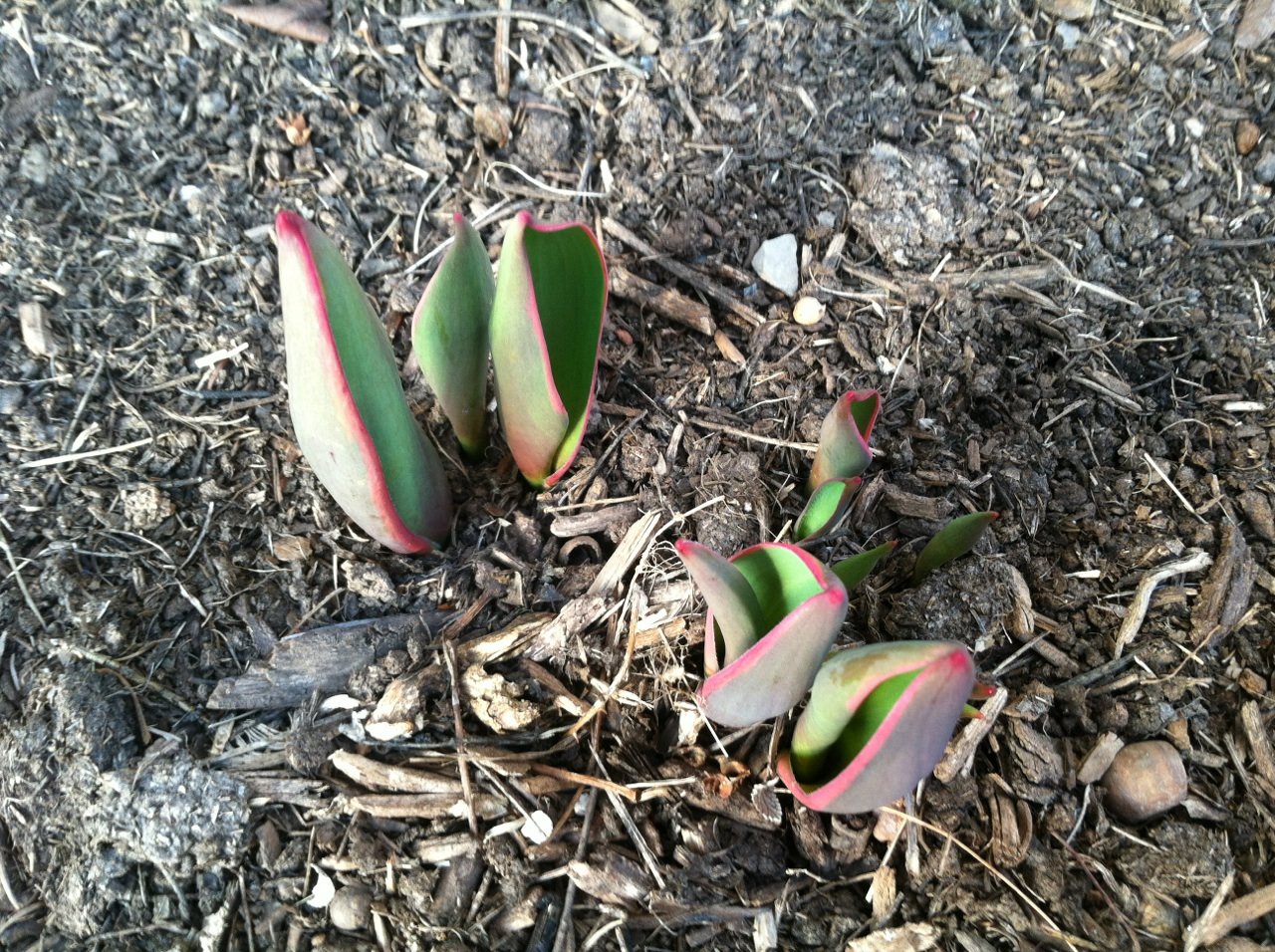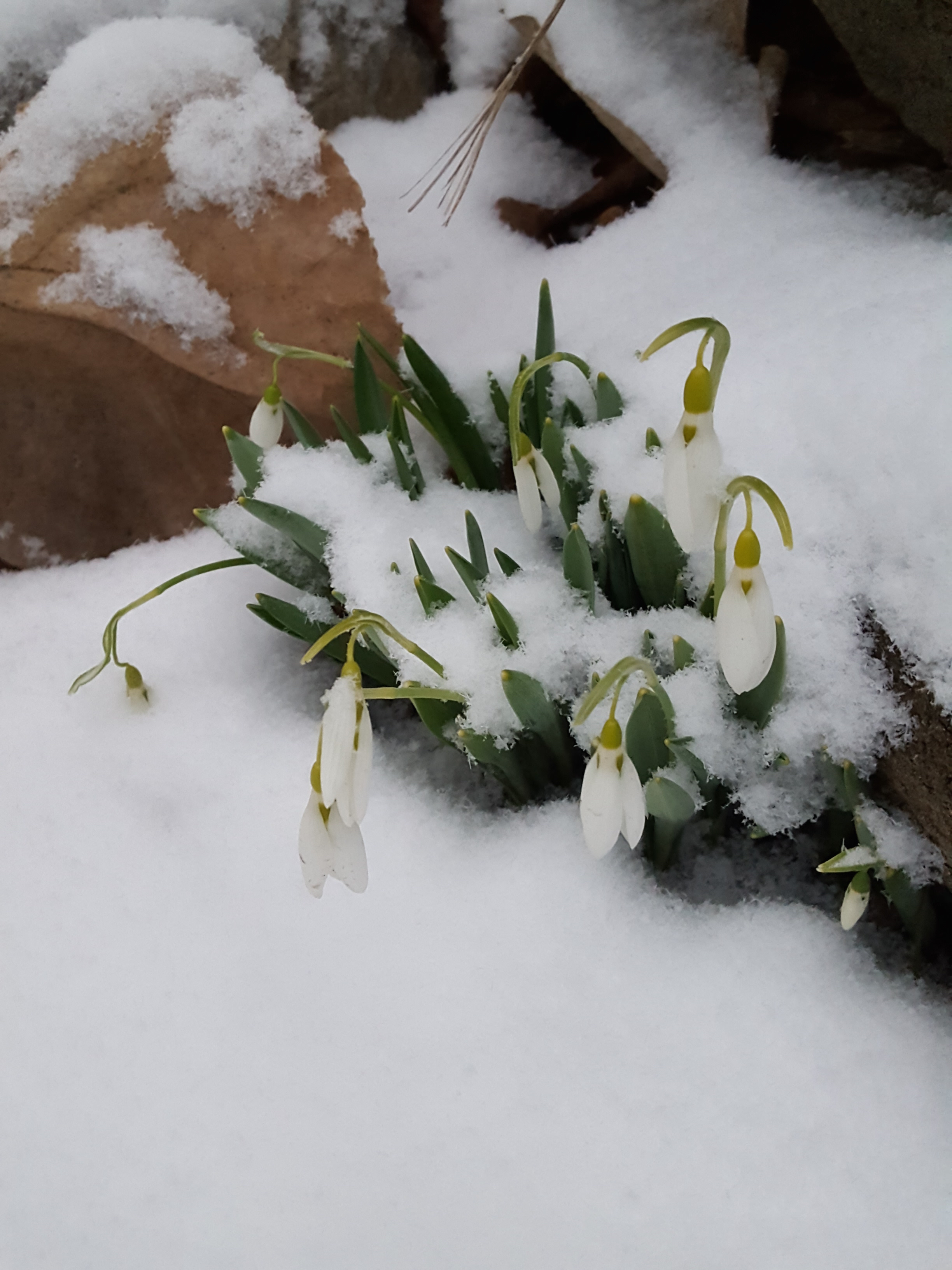In the midst of a week when temperatures in the Northeast and many other parts of the country have been in the 60s, we’re seeing the effects of a sustained February warm-up in our gardens. Snowdrops are blooming here in Connecticut (they’re shown in the photo above, which was taken in mid-February), daffodil buds have appeared, and the leaves of some tulips are several inches out of the ground.

While most plants can sleep through a day or two of unseasonably warm temperatures, unusually hot weather that lasts for an extended period can cause them to wake from winter slumber and begin sending up tender shoots. With cold temperatures due to return later this week, and another month of winter ahead, some plants have been made vulnerable by this climatic miscue.

What’s to be done? We long ago abandoned worrying as a helpful course of action. Instead, we try to be patient and take a long view. We walk amid the garden beds to keep an eye on things. Any perennial or shrub whose roots have popped out of the ground due to frost heaves can be covered with soil, gently firmed into place, and watered to ameliorate the effects of its exposure to sunlight and wind. To protect bulbs, nursery manager Barb Pierson says, “With the unseasonably warm weather, early bloomers such as galanthus (snowdrops) and eranthis (winter aconite) may be showing foliage and blooms. They are conditioned naturally for cold weather fluctuations so no need to worry, just enjoy them! Other spring bloomers such as tulips, narcissus and hyacinths can get foliage burn if the temperatures are in the low 20’s and upper teens without snow protection for extended periods. Most seasons the flowers remain underground until later so you may get a little leaf burn but will still get a flower show. It’s possible that if our warm weather continues they could progress even further. If your local forecast calls for temps in the teens and you have a concern, you can use frost blankets, home linens or cloches to cover your plants. Do not use plastic bags, they are not effective. Mulch is not recommended. Unless you’re in an area free of digging critters, the mulch will attract them to your bulbs.”

It also may help to keep your faith in the rugged disposition and hardiness of many plants. We all take risks in the garden, trying out new plants and perhaps even pushing hardiness zones to incorporate things we love into our borders and beds. In the end, Nature will prevail. The extreme nature of this winter’s early warm-up will test some plants, and it may disrupt the bloom cycle of some spring-flowering trees and shrubs, but we can only wait and see. It’s important to remember that loss is an inevitable part of gardening no matter how experienced the green thumb and no matter what the weather brings from one year to another. When our true spring arrives at last, we can all look forward to a flower show that owes no small debt to resiliency. If any holes appear in our gardens where plants failed to thrive, they can be viewed as invitations to try something new, to accommodate changes, and to refine the gardens that do so much to sustain us.



